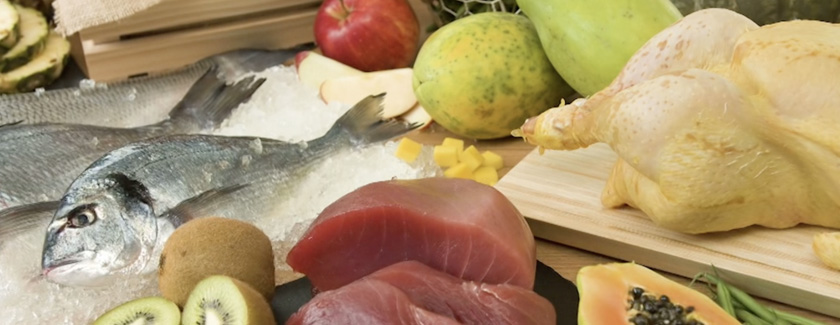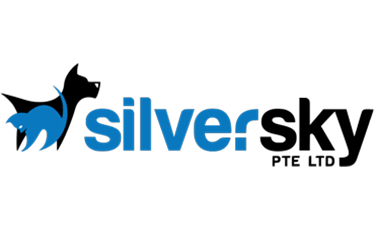- No products in the cart.

HOME | DOG LINE | CAT LINE | INGREDIENTS LIST | SOURCING MAP | TRACEABILITY | SHOP RETAILERS

The most genuine food has a short, clear and simple label. Wet and dry food products are produced quite differently, so it would not be possible to reduce the number of ingredients of kibble to two or three as in the “natural” line of products in cans or sachets. What matters is that only what is useful for the dog or cat appears in the composition, nothing else!
Fish
| Protein | Source |
| Tuna
|
TUNA: the used species are only two: the Euthynnus affinis (called Bonito) and the Katsuwonus pelamis (called Skipjack): these are species not over-exploited. They are caught in the open sea with sustainable methods that guarantee the protection of dolphins and endangered species (Ocean friendly). |
| Salmon
|
SALMON: the used species are only two: Onchorynchus nerka (called Sokeye or red salmon) and Onchorynchus gorbuscha (called pink salmon). They are caught in the open sea with sustainable methods that guarantee the protection of dolphins and endangered species (Ocean friendly). Naturally they contain omega 3 fatty acids. |
| Seabass
|
SEABASS: the species used is Dicentrarchus labrax, belonging to the Moronidae family. They are caught in the open sea with sustainable methods that guarantee the protection of dolphins and endangered species (Ocean friendly). |
| Seabream | SEABREAM: the species used is Sparus aurata, belonging to the Sparidae family. They are caught in the open sea with sustainable methods that guarantee the protection of dolphins and endangered species (Ocean friendly). |
| Mullet | MULLET: the species used is Mullus barbatus, of the Mullidae family. They are caught in the open sea using sustainable methods that guarantee the protection of dolphins and endangered species (Ocean friendly). |
| Pilchards | PILCHARDS: the species used is Escualosa thoracata, belonging to the Clupeidae family. They are caught in the open sea with sustainable methods that guarantee the protection of dolphins and endangered species (Ocean friendly). |
| Whitebaits | WHITEBAITS: the species used is Stolephorus spp, from the family Engraulidae. They are caught in the open sea with sustainable methods that guarantee the protection of dolphins and endangered species (Ocean friendly). |
| Hake | HAKE: the species used are Merluccius paradoxus or Merluccius capensis, of the family Merlucciidae (cold water fish). They are caught in the open sea with sustainable methods that guarantee the protection of dolphins and endangered species (Ocean friendly). |
| Nemipterus (Surimi)
|
SURIMI: surimi used in wet Schesir products is a preparation based on Nemiptero, a white fish caught in the central and western Pacific Ocean, in the FAO 71 area. The white fish species used is Nemipterus spp, from the family Nemipteridae. They are caught in the open sea with sustainable methods that guarantee the protection of dolphins and endangered species (Ocean friendly). |
| Shrimps | SHRIMPS: the species used is Parapenaeus spp, from the Penaeidae family. They are caught in the open sea with sustainable methods that guarantee the protection of dolphins and endangered species (Ocean friendly). |
| Squid | SQUID: the species used are the Loligo sp or Loligo formosana, of the family Loliginidae. They are caught in the open sea with sustainable methods that guarantee the protection of dolphins and endangered species (Ocean friendly). |
Animal Protein
| Protein | Source |
| Chicken
|
CHICKEN: the chickens used in organic products are bred in Germany and Holland according to the rules laid down for organic farming. Chickens used in Schesir wet products are bred in Thailand, following the hygienic-sanitary guidelines provided by the European Regulations. They belong to the species Gallus domesticus, of the Phasianidae family (birds of Indian origin). The chicken contains proteins of high biological value, which provide all the aminoacids the pet needs. |
| Duck
|
DUCK: the ducks used in Schesir wet products are bred in Thailand following the hygienic-sanitary indications provided by the European Regulations. They belong to the species Anas spp, of the Anatidae family (which also includes birds such as swans and geese). |
| Beef
|
BEEF: beef used in organic products is bred in Germany according to the rules laid down for organic farming. The one used in Schesir wet products is bred in Australia and New Zealand, following the hygienic-sanitary indications provided by the European Regulations. It belongs to the species Bos taurus, ruminant mammal of the Bovidae family. |
| Ham
|
HAM: ham used in Schesir wet products derives from pork of Thai origin, bred following the hygienic-sanitary indications provided by the European Regulations, of the Sus scrofa species (Suidae family). It is a preparation of cooked pork with natural flavors. |
| Lamb | LAMB: lamb used in Schesir wet products is bred in New Zealand, following the hygienic-sanitary indications provided for by the European Regulations, and belongs to the species Ovis aries, the ruminant mammal of the Bovidae family. |
| Pork | PORK: pork used in organic products is bred in Germany and Italy according to the rules laid down for organic farming. The species is Sus scrofa of the Suidae family. |
| Dehydrated eggs
|
DEHYDRATED EGGS: they are in the composition of Schesir Dry products for puppies. Eggs are the ingredient with the highest biological value and offer to the pets many nutrients such as proteins, fats, vitamins and minerals. |
Cereals and seeds
| Types | Source |
| Rice, Brown Rice
|
RICE, BROWN RICE: the rice in the Schesir recipes is the seed of Oryza sativa, a cereal from local crops (Italian for dry, Thai for the wet), to reduce the impact of transport on the production process. It is used in a variable percentage between 1% and 4% in Schesir wet products, and between 4% and 24% in Schesir Dry products. Rice is a source of carbohydrates and fibers and is in wet food to rebalance the protein intake and as a source of fiber; in dry food, together with the other cereals in the formula, it is useful to obtain an optimal texture of the kibbles in extrusion and to rebalance the protein intake of the food. |
| Tapioca starch
|
TAPIOCA STARCH: the tapioca starch in Schesir wet products is a valid source of fiber that can replace rice. It comes from the tuberiform root of the manioc plant (Manihot esculenta Crant, family of the Euphorbiaceae) cultivated in Thailand. It initially appears as small white spheres that become transparent and gelatinous with cooking: in Schesir products it is present as a natural gravy. This ingredient is not a cereal, so all Schesir products in gravy are Grain Free and therefore also Gluten Free. |
| Wheat
|
BEEF: beef used in organic products is bred in Germany according to the rules laid down for organic farming. The one used in Schesir wet products is bred in Australia and New Zealand, following the hygienic-sanitary indications provided by the European Regulations. It belongs to the species Bos taurus, ruminant mammal of the Bovidae family. |
| Quinoa
|
QUINOA: quinoa used in Schesir wet products comes from cultivations in central and south America, ancient areas of origin of this vegetable. It is the seed of the plant Chenopodium quinoa, a chenopodiacea, so although not a cereal, it is still a source of carbohydrates and fibers. It is in some Schesir wet products, clearly recognizable thanks to the GRAIN FREE logo on the packaging. These references are consequently also GLUTEN FREE. Quinoa is inside these products to rebalance the protein intake, give more flavor to the recipe and as a source of fiber alternating with rice, for cats (and owners of cats) who do not want cereals. |
Vegetables
| Types | Source |
| Kiwi | KIWI: it is the edible berry of the Actinidia Deliciosa plant. It contains vitamin C, available only in fresh fruit, and, like all fruit, contains mineral salts. The green pulp is characterized by the presence of black seeds, which contribute to fiber content. It is in some Schesir wet products as a topping to give more flavor to the recipe, and as a source of fiber. As established by the study carried out at the University of Bologna, the inclusion of small amounts of fruit in the cat’s diet positively affects the intestinal environment. |
| Papaya | PAPAYA: it is the fruit of the Carica papaya bush, belonging to the Caricaceae family, a plant that grows very easily and blooms very often. It comes from local crops to reduce the impact of transport on the production process. Papaya can grow large, but smaller fruits are preferred in trade; it is tasty and rich in water and fiber, as well as antioxidants and mineral salts. It is inserted as a topping in Schesir wet products to give more flavor to the recipe, and as a source of fiber. As established by the study carried out at the University of Bologna, the inclusion of small amounts of fruit in the cat’s diet positively affects the intestinal environment. |
| Apple | APPLE: apple is the fruit (false fruit) of the Malus domestica plant of the Rosaceae family. There are many commercial varieties available on the market all year round. It is a topping in Schesir wet products to give more flavor to the recipe, and as a source of fiber. As established by the study carried out at the University of Bologna, the inclusion of small amounts of fruit in the cat’s diet positively affects the intestinal environment |
| Pineapple | PINEAPPLE: it is the juicy infructescence of the Ananas comosus plant of the Bromeliaceae family. It comes from local crops to reduce the impact of transport on the production process. It is a topping in Schesir wet products to give more flavor the recipe, and as a source of fiber. As demonstrated by the study carried out at the University of Bologna, the inclusion of small amounts of fruit in the cat’s diet positively affects the intestinal environment. |
| Mango | MANGO: it is the fruit of the Mangifera indica tree, belonging to the Anacardiacee family. It is compact, fragrant and tasty: it can be sweet or sour-pungent but still delicate and pleasant. It comes from local crops to reduce the impact of transport on the production process. It is a topping in Schesir wet products to give more flavor to the recipe, and as a source of fiber. As established by the study carried out at the University of Bologna, the inclusion of small amounts of fruit in the cat’s diet positively affects the intestinal environment. |
| Pumpkin | PUMPKIN: it is the fruit of the plants of the Cucurbitaceae family, its orange pulp is soft. It comes from local crops to reduce the impact of transport on the production process. It is a topping in wet Schesir products to give more flavor to the recipe and as a source of fiber. |
| Carrots | CARROTS: these are the roots of the herbaceous plant Daucus carota, which can be spontaneous or cultivated, belonging to the Apiaceae family. Whenever possible, those from local crops are chosen to reduce the impact of transport on the production process. They are toppings in Schesir wet products to give more flavor to the recipe, and as a source of fiber. |
| Green beans | BEANS: they are the green and unripe pods of the common bean plant (Phaseolus vulgaris). They come from local crops to reduce the impact of transport on the production process. They are a toppings in Schesir wet products to give more flavor to the recipe and as a source of fiber. |
| Peas | PEAS: the pea is the seed or legume of the annual herbaceous plant Pisum sativum L., belonging to the Fabaceae family. Peas are rich in protein and fiber and can be combined with cereals along with other ingredients to provide energy and protein. When possible, those from local crops are chosen to reduce the impact of transport on the production process. |
| Potatoes | POTATOES: tubers obtained from plants of the species Solanum tuberosum rich in starch and a good source of energy. Very digestible and included in the recipe as a source of fiber. When possible, those from local crops are chosen to reduce the impact of transport on the production process. |
| Spinach | SPINACH: the leaves, thick and green, of the herbaceous plant Spinacia oleracea of the Chenopodiaceae family. They are a useful source of fiber and minerals. It is a topping in Schesir wet products to give more flavor to the recipe, and as a source of fiber. When possible, those from local crops are chosen to reduce the impact of transport on the production process. |
| Aloe | ALOE: succulent plant Aloe barbadensis Miller, from the Aloeaceae family. It comes from local crops to reduce the impact of transport on the production process. It is a perennial shrub of which the fleshy leaves are used. It is a topping in Schesir wet products to give more flavor to the recipe, and as a source of fiber. |
| Algae | ALGAE: seaweed Porphyra spp of the Bangiacea family. It is a topping in Schesir wet products to give more flavor to the recipe, and as a source of fiber. |
| Ginseng | GINSENG: it is the root of the Panax plants of the Araliaceae family. It is a topping in Schesir wet products to give more flavor to the recipe. |
HOME | DOG LINE | CAT LINE | INGREDIENTS LIST | SOURCING MAP | TRACEABILITY | SHOP RETAILERS

